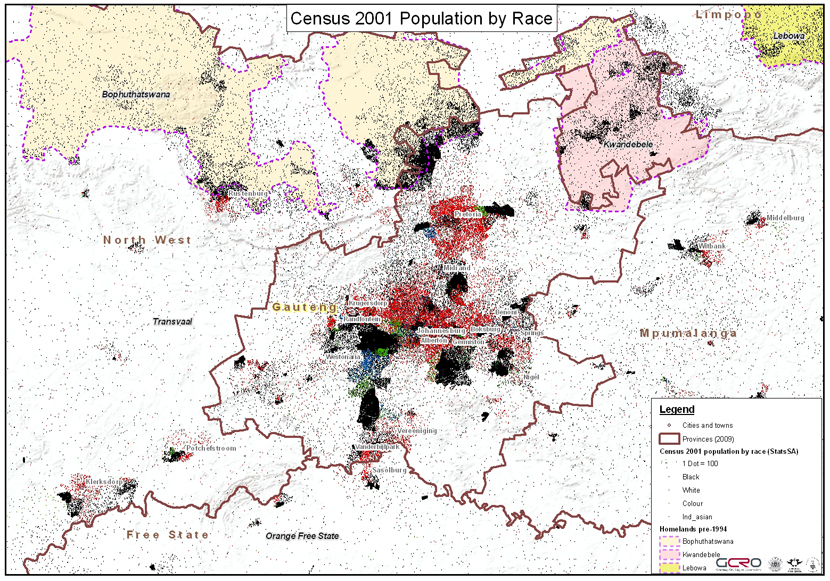
| national and provincial government under apartheid | ||
The national, provincial and local government institutions currently in place are new. Two decades ago the structure of government looked very different. National government: under apartheid, the territory of South Africa was divided into ‘separate’ national government units along racial and ethnic lines. Parts of the region of cities and towns in and around Gauteng were governed as part of 'white South Africa'. Other parts were governed by so-called ‘independent homelands’ or ‘bantustans’. To the north-west of Pretoria, an archipelago of areas comprised Bophuthatswana, regarded as an independent state under apartheid. To the north-east was KwaNdebele, a homeland which had not yet reached the status of an ‘independent self-governing territory’. These ‘homelands’, which were meant to be sites of ‘separate development’, are the main reason that the Gauteng city-region sees large concentrations of displaced urbanisation in its northern parts. Millions of people, unable to set up homes legally in ‘white South Africa’, crowded up against the boundaries of Bophuthatswana and KwaNdebele, as close as possible to the country’s centres of economic opportunity. |
||
| distribution of population by race in 2001 against old homeland boundaries | ||
 |
||
Provincial government: the area that is today defined as Gauteng was previously administered as part of the province of the Transvaal, one of four provinces in the old South Africa. The Transvaal spread over the whole northern part of South Africa, covering the area now split into the provinces of Gauteng, North West, Mpumalanga and Limpopo. |
||
